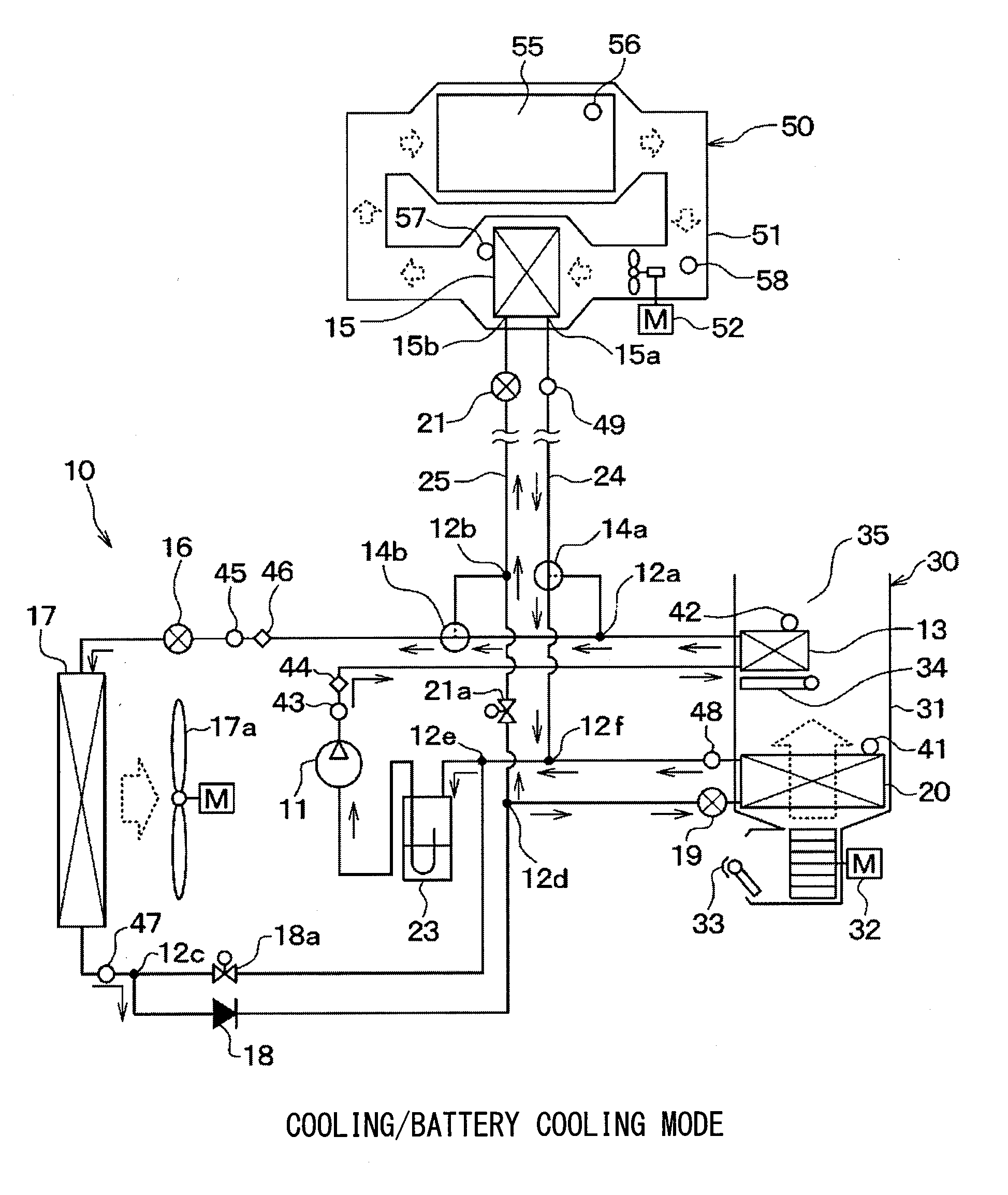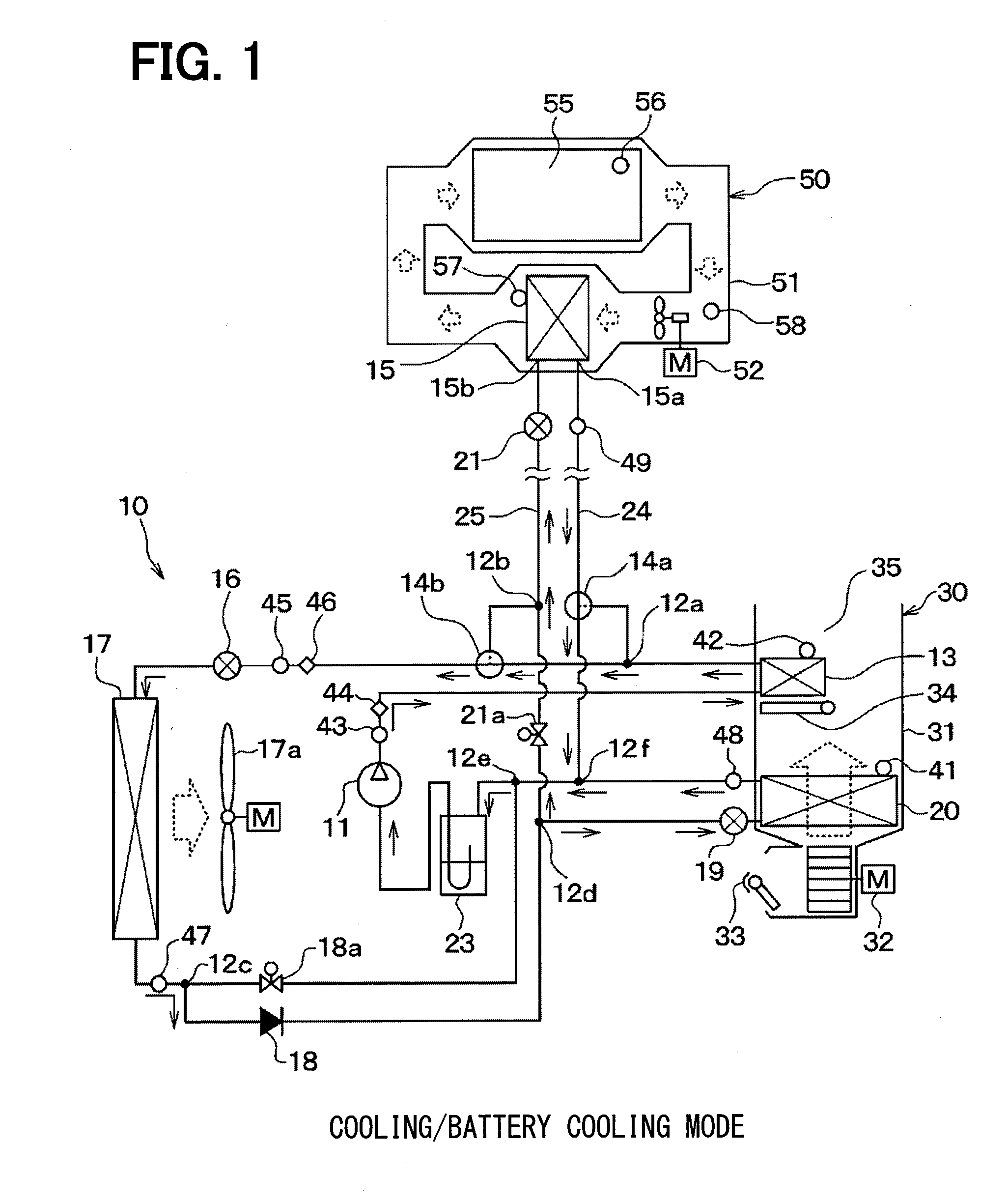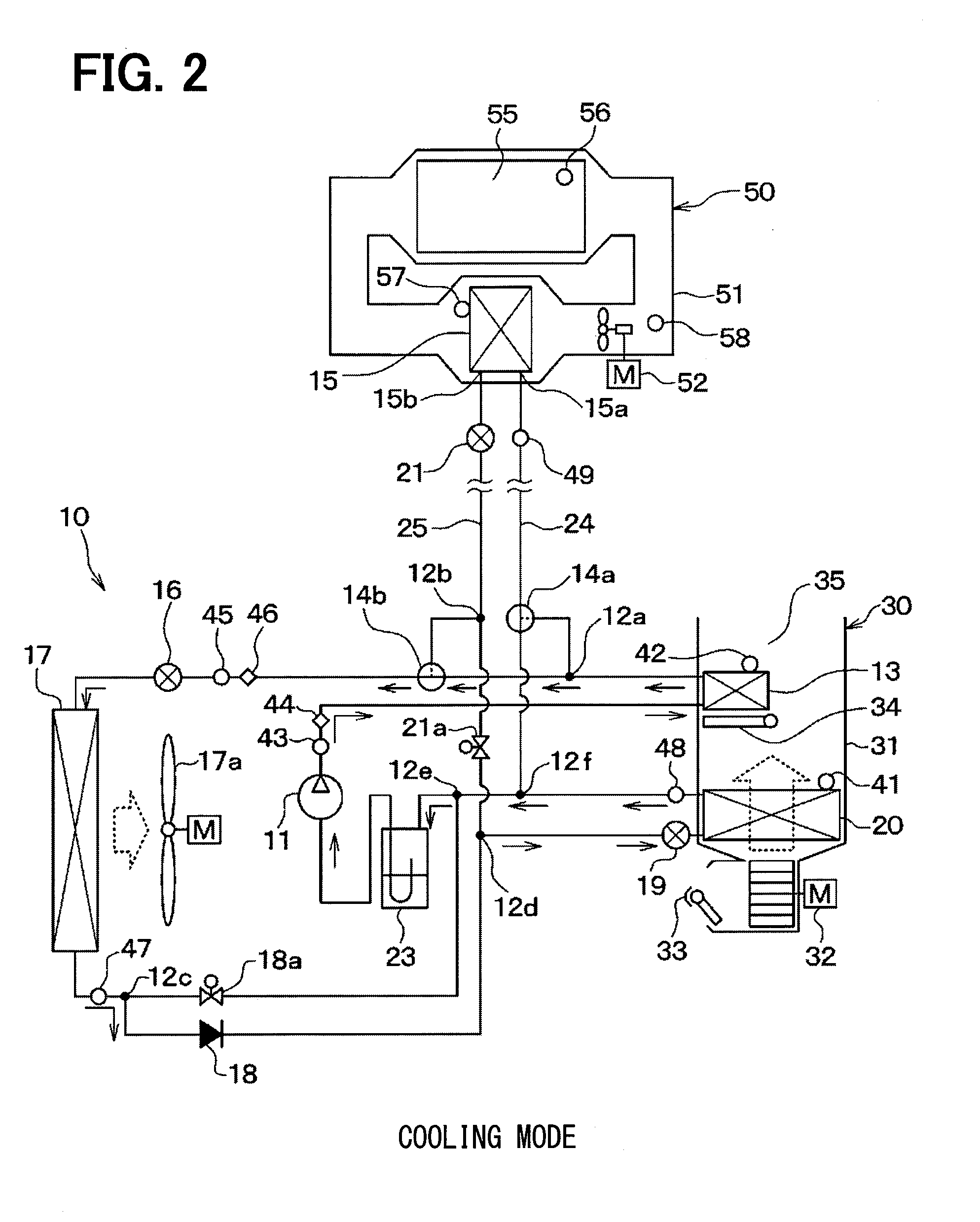Refrigeration cycle device
a cycle device and refrigeration technology, applied in the direction of electric devices, battery/fuel cell control arrangement, lighting and heating apparatus, etc., can solve the problems of secondary battery not having sufficient regenerative power, secondary battery not having sufficient output/output characteristics, etc., to suppress increase, small passage cross-sectional area, large passage cross-sectional area
- Summary
- Abstract
- Description
- Claims
- Application Information
AI Technical Summary
Benefits of technology
Problems solved by technology
Method used
Image
Examples
first embodiment
[0039]A first embodiment of the present disclosure will be described with reference to FIGS. 1 to 7. In the first embodiment, a refrigeration cycle device 10 is applied to an electric vehicle which obtains driving power for traveling of the vehicle from a traveling electric motor. Furthermore, in the electric vehicle, the refrigeration cycle device 10 is used to perform air conditioning (cooling and heating) of a vehicle interior and temperature regulation (heating and cooling) of a secondary battery 55 as a condenser which stores electric power supplied to the traveling electric motor.
[0040]In more detail, the refrigeration cycle device 10 performs a function of regulating a temperature of inside air (inside ventilation air) blown into the vehicle interior and a function of regulating a temperature of battery air (battery ventilation air) blown toward the secondary battery 55. In other words, the refrigeration cycle device 10 regulates temperatures of a plurality of temperature reg...
second embodiment
[0171]As shown in FIGS. 8 to 12, a second embodiment is to add a four-way valve 26 to the auxiliary heat exchanger 15 in the first embodiment.
[0172]In the second embodiment, the auxiliary heat exchanger 15 has a refrigerant inlet 15c through which the refrigerant is introduced and a refrigerant outlet 15d through which the refrigerant is discharged. The auxiliary heat exchanger 15 is configured such that the refrigerant flows in the auxiliary heat exchanger 15 from the refrigerant inlet 15c to the refrigerant outlet 15d.
[0173]The refrigerant inlet 15c is connected to a first connection port of the four-way valve 26 through the battery expansion valve 21. The refrigerant outlet 15d is connected to a second connection port of the four-way valve 26. The first and second pipes 24 and 25 are connected to third and fourth connection ports of the four-way valve 26, respectively.
[0174]The four-way valve 26 is a communication state switching portion which switches a first communication stat...
third embodiment
[0219]As shown in FIG. 14, a third embodiment is to add a first battery expansion valve (first pressure reducer) 27 in the refrigeration cycle device 10 of the first embodiment. A second battery expansion valve (second pressure reducer) 21 corresponds to the battery expansion valve 21 of the first embodiment.
[0220]The auxiliary heat exchanger 15 communicates with the first pipe 24 through the first battery expansion valve 27 at the first entrance port 15a, and communicates with the second pipe 25 through the second battery expansion valve 21 at the second entrance port 15b.
[0221]Each of the first and second battery expansion valves 27 and 21 is an electric expansion valve having the same configuration as the heating expansion valve 16, and has a full closing function and a full opening function.
[0222]In each operation mode, the operations of the first and second battery expansion valves 27 and 21 are as follows, and the operations of the other devices are the same as those in each ...
PUM
 Login to View More
Login to View More Abstract
Description
Claims
Application Information
 Login to View More
Login to View More - R&D
- Intellectual Property
- Life Sciences
- Materials
- Tech Scout
- Unparalleled Data Quality
- Higher Quality Content
- 60% Fewer Hallucinations
Browse by: Latest US Patents, China's latest patents, Technical Efficacy Thesaurus, Application Domain, Technology Topic, Popular Technical Reports.
© 2025 PatSnap. All rights reserved.Legal|Privacy policy|Modern Slavery Act Transparency Statement|Sitemap|About US| Contact US: help@patsnap.com



